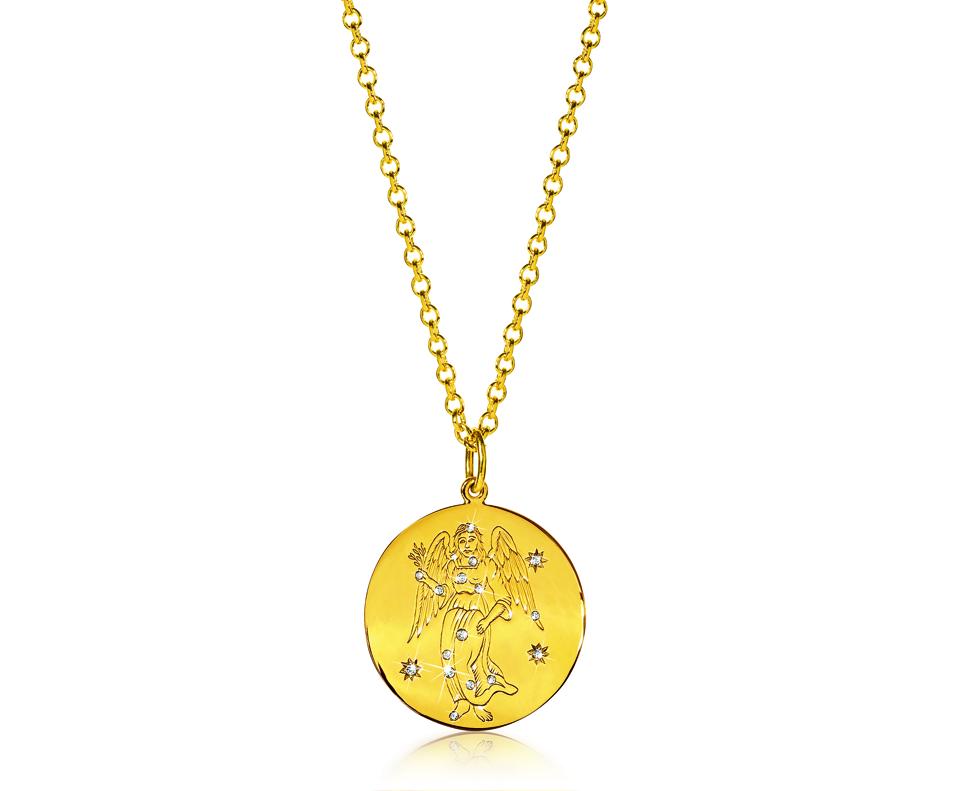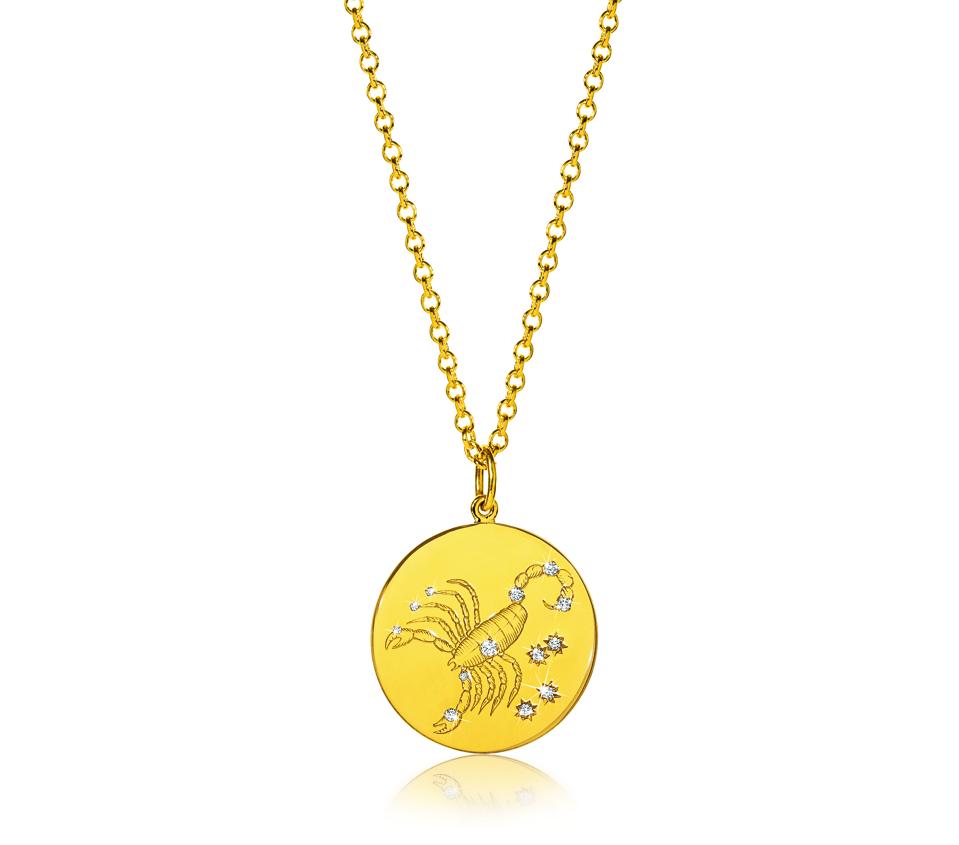Verdura’s postcard box from the Museum of Natural History’s Gift Shoo which inspired his celestial … [+]
Verdura
The timing couldn’t be more apropos—just as New York City’s museums have opened back up (with restrictions) Verdura is launching the new Zodiac Collection which is partly inspired by Fulco di Verdura’s visits to the Museum of Natural History’s Hayden Planetarium. It opened in 1935, the year that the young jeweler, who had previously worked for Chanel, (most notably on Byzantine designs and the iconic Maltese Cross bracelets) arrived in New York to design for Paul Flato. Imagining Verdura standing amongst the revolving planets and starlight ceiling that I used to visit myself as a young girl, one could understand how he would be awe struck and influenced by the Copernican room, a large circular auditorium designed around a rotating modal of the Earth’s solar system of the twelve zodiac constellations, painted by the famed wildlife painter. Charles R. Knight.

Verdura’s Pisces postcard from the Copernican postcard 12 pack, Pisces Fulco di Verdura’s zodiac … [+]
Vedura
In 1941, When Verdura struck out on his own, his creative range ran from the whimsical and boldly colorful to elegant and more refined. Many of his designs were based on celestial patterns throughout the years. The constellations and the symbolism behind theme provided him with variations on the theme of the zodiac in brooches and medallions throughout the years of his career.
Nico Landrigan, President of the Verdura and the Belperron companies, both of which his father Ward Landrigan owns, explains, “although we knew he was drawn to astrology , we only recently uncovered the inspiration behind his designs—a set of 12 postcards purchased from the gift shop at the American Museum of Natural History, each which featured a unique illustration of the murals of the zodiacs from the Copernican room. It was a true revelation to find these archival postcards and we knew we had to create a collection around them and reinterpret designs he did on cigarette cases along with brooches and pendants.” Nico continues, “The influence of the Planetarium was one of the ways in which Verdura embraced the city of New York, which became home for him.”
Nico continues,” astrological postcards were not the only purchase from the Museum’s gift shop.” In an interview with The New Yorker the spring Verdura launched, he was quoted as saying, “What I get a kick out of is to buy a shell for five dollars, use half of it, and sell it for twenty-five hundred.” The shells in question, now mounted in gold and covered with gems, he revealed had been purchased at the gift shop in the American Museum of Natural History. Throughout his career, Verdura continued to visit the museum, perusing the shelves of its gift shop and purchasing petrified wood, amethyst geodes and assorted crystals and semi-precious stones to set in his designs.”

Verdura’s new Virgo Pendant.
Verdura

Verdura’s Virgo postcard from the Musem of Natural HIstory.
Verdua
The inexpensive postcards inspired an expansive love for all things celestial and the magic and mystery and mythology of the evening sky.
Zodiacs are part of the category of personalized jewelry which is having a moment right now. I asked Nico if the timing of the launch had anything to do with this. “Throughout the time that Verdura was designing, Bulgari, Van Cleef & Arpels and Cartier all created their own very distinctive versions of astrological symbols—all unique to their brands but jewelry is cyclical so yes I do think this is perfect timing for a new collection of these wonderful pieces that have Fulco’s DNA. The collection is beautifully designed—all pendants are set with diamonds as stars and hand engraved with the astrological symbols.

Verdura’s New Zodiac Collection Libra Pendant
Verdura

Verdura’s Libra Postcard from the Museum’s 12 Pack
Verdura
It’s a collection that will appeal to women of all ages. And while the Hayden Planetarium is one of the wings which is still closed due the pandemic at the Museum , one can slip on a necklace, dream and get lost in the hope of the heavens, the wonder of the universe and appreciate the imagination and down-to-earth nature of a designer who purchase of postcards became a huge inspiration for jewelry we want to wear. The scorpion in me is coveting the new pendant as I write.

Verdura’s New Zodiac Collection Scorpio Pendant
Verdura

Verdura’s Scorpio postcard from the museum’s 12 pack
Verdura

/https://specials-images.forbesimg.com/imageserve/5f5c50aa00143a9ca6ef8e58/0x0.jpg)